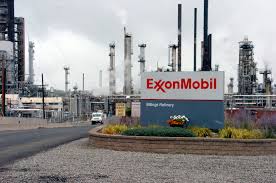According to CEO Darren Woods, Exxon Mobil Corp.’s Low Carbon division could surpass the company’s regular oil and gas operations within ten years and provide hundreds of billions of dollars in income.
In a meeting with Wall Street on Tuesday, the country’s top oil producer outlined to investors the goals of its impending energy transition strategy. According to Woods, Exxon is entering a market that in ten years or more should be worth several trillion dollars.
By entering into predictable, long-term contracts with clients who are attempting to lower their own carbon footprints, Exxon will become less susceptible to fluctuations in commodity prices.
Dan Ammann, head of Exxon’s two-year-old Low Carbon Business Solutions division, promised that “this business is going to look quite a deal different than the base business of Exxon Mobil.” “It will have a much more steady profile or one that is less cyclical.”
Regulatory and policy support for carbon pricing, which the U.S. has not widely accepted, and the cost to reduce greenhouse gas emissions, among other adjustments, will determine how soon that goal becomes a reality, he said.
Ammann declined to comment on whether the plan is supported by predictions of higher oil prices.
With carbon prices as high as three times present levels, the business on Tuesday outlined the boundaries for how it envisions that expansion to play out.
Exxon is one of the Western oil producers that are most focused on oil and gas, and as fossil fuel prices rose last year, this strategy brought in record profits for its investors.
Exxon has avoided using alternative energy sources like solar and wind, in contrast to its competitors. Exxon aims to invest $10 billion by 2027 in decreasing carbon emissions from its own businesses as part of its energy transition strategy.
In order to compete with the conventional oil and gas industry, Exxon is focusing on carbon capture, hydrogen, and biofuels, which it thinks will have a combined potential of $6.5 trillion by 2050.
The business announced on Tuesday that it has inked a long-term contract with Linde Plc, bringing the total number of clients prepared to pay to decarbonize their operations to 12.
Under the current scenario, it anticipates signing contracts that will bring in multiple billions of dollars in revenue per year for the next five years. With these long-term contracts, the company may generate “strong double-digit returns,” according to Ammann.
According to the company’s presentation, the market may generate tens of billions of dollars in annual revenues in five years or more, depending on carbon price and regulatory circumstances.

















